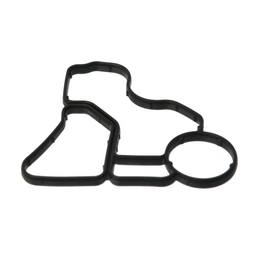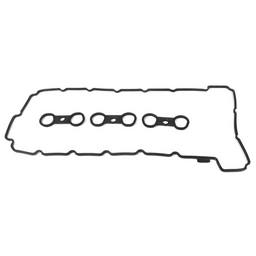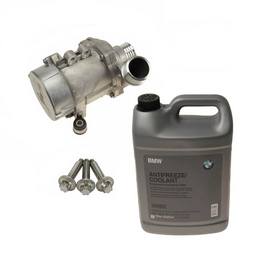We all see some cars on the road more often than others. These cars sell mostly because they are efficient, powerful, have a strong image; or maybe even a combination of all three. However, one of them deserves appreciation in every aspect like interior, engines, performance, economy – the BMW E90 3-Series.

While keeping consumption within acceptable limits with this model’s diesel engines, they can travel like a hot hatch and comfortably host four people in their exquisite interiors. They can combine these with an attractive logo and offer a high level of satisfaction to their users. You probably guessed it with that many clues; we are talking about the BMW E90 3-Series.
Article updated on 09/01/21. Original publishing date 09/23/19
BMW E90 Brief History
The E90 was produced from 2005 to 2011 and was designed from the ground up, completely independent of its predecessor, the E46. Even today the E46 chassis is considered to be a very reliable car. Needless to say, the E90 had massive shoes to fill when it replaced the E46, and today, we can easily say that it was fairly successful.
BMW started the production of the E90 in 2005 and was heavily criticized by 3-Series fans. The taillight design especially got a huge negative reaction. It must have bothered BMW also because the E90 received a makeover in 2009. It included few minor cosmetic changes, and the highly criticized taillights were completely changed and replaced by a much better fitting design.
BMW E90 3-Series Models
BMW fans always love the fact that each chassis BMW produces usually ends up with many different options and choices. As always, BMW offered the E90 chassis with several engine options, including the following.
- BMW 325i (2005-2007) – 2.5 lt 6 cylinder – 215 HP (160 kW) | N52B25O1 engine
- BMW 325i (2007-2013) – 3.0 lt 6 cylinder – 215 HP (160 kW) | N53B30U0 engine
- BMW 328i (2007-2013) – 3.0 lt 6 cylinder – 231 HP (172 kW) | N52B30 engine
- BMW 330i (2005-2007) – 3.0 lt 6 cylinder – 255 HP (190 kW) | N52B30O0 engine
- BMW 330i (2007-2013) – 3.0 lt 6 cylinder – 268 HP (200 kW) | N53B30O0 engine
- BMW 335i (2006-2009) – 3.0 lt 6 cylinder – 302 HP (225 kW) | N54B30O0 engine
- BMW 335i (2006-2009) – 3.0 lt 6 cylinder – 302 HP (225 kW) | N54B30O0 engine
- BMW 335i (2009-2013) – 3.0 lt 6 cylinder – 302 HP (225 kW) | N55B30 engine
- BMW 335is (2011-2013) – 3.0 lt 6 cylinder – 322 HP (240 kW) | N54B30T0 engine
- BMW M3 (2006-2013) – 4.0 lt V8 – 414 HP (309 kW) | N65B40 engine
- BMW M3 GTS (2010-2011) – 4.4 lt V8 – 444 HP (331 kW) – | N65B44 engine
Common Issues on BMW E90
Following the E46 3 Series, the E90 has been a solid replacement as a reliable machine. Of course, it was more electronic and more complex than the E46 and was one of the more complicated cars BMW had to offer at the time. While technologically advanced, these cars dealt with several issues that turned out to be fairly common.
Engine

Under the hood, there is a choice between several, at that time, newly designed engines. These machines had gigantic shoes to fill in, as they replaced the legendary M54 unit, which was a huge hit in terms of power, durability and tunability.
Despite initial criticism and disapproval from fans and some experts, new engines proved to be as reliable as their predecessors. From the petrol engines, the most reliable are the six cylinders with the N51 or N52 engine code, installed in cars badged as 325i, 328i and 330i. A step up in the power is the turbocharged version, coded N54 or N55 in newer versions. You can find it in cars with 335i badge on the trunk lid.
Still, just like any other machine in the world, these engines have several weak spots.
Leaking Oil Filter Housing Gasket
Leaking oil filter housing gaskets are the most common issue with all E90 engines, and you will hardly find an engine that hasn’t had this problem at some time. There are two gaskets — one between the oil filter housing and engine block, and the other between the housing and oil cooler.
With time, these gaskets become hard and brittle, resulting in an oil leak. Gaskets are not expensive, and changing them is quite easy.
VANOS Solenoids
All E90 engines have variable valve timing, called Vanos. Although the system is reliable, two solenoids that control the valve timing can have problems caused by oil sludge. This will lead to running issues, lack of low-end torque and illuminated check engine light. Solenoids can be easily removed and cleaned.
DISA Valve Flaps
N52 engines have two DISA flaps, which alter the intake manifold geometry. These flaps can get loose and not seal properly. If left like that, they can even break off and cause major engine damage. Repair sets are available online, but the replacement requires intake manifold removal.
Valve Cover Gasket Leak
A valve cover gasket is another potential oil leak spot. When that happens, the oil will drip on the exhaust manifold, causing a strong burning smell in the cabin. Leaking gaskets should be replaced without delay, as it can lead to a fire in some extreme cases.
Electric Water Pump Issues
All six-cylinder engines use an electrical water pump, whose speed depends on the engine temperature and load. The electric motor that powers the coolant pump can fail with time, causing engine overheating. Although a new pump is a bit expensive, changing it as a preventive measure on high mileage cars is the best idea.
Valvetronic Stepper Motor
In addition to Vanos, these engines use a Variable Valve Lift system, called Valvetronic. It uses a stepper motor and a combination of levers to control the amount of intake valve lift. Although it seems complicated, the only usual failure point is the stepper motor itself, which can seize. BMW uses a complex crankcase ventilation system, with a set of separators and a diaphragm that controls the crankcase pressure.
If this diaphragm ruptures, large amounts of oil vapor will get into the intake manifold, causing blue smoke from the exhaust and high oil consumption. Although BMW doesn’t sell the diaphragm as a replacement part, there are repair kits available online. A typical repair is a new valve cover.
High Pressure Pump on Turbocharged Engines
Turbocharged engines use a high-pressure fuel injection system, which has two common failure points. One is a high-pressure pump, especially on early models, which causes strong hesitation, lack of power and poor acceleration.
Another possible issue is with clogged fuel injectors, which can happen if the car runs on poor quality fuel. In addition, turbochargers can start leaking oil internally, although this is not that common.
Carbon Buildup on Intake Valves
Turbocharged engines also tend to have issues with carbon buildup on the intake valves. Symptoms will include slight stuttering during acceleration. Intake valves and ports should be inspected, and the carbon should be removed with a process called walnut blasting.
Suspension and Brakes
E90 was available with 2 options when it came to suspension systems, factory, and sport. MacPherson at the front and Multi-link suspension at the rear made the vehicle’s handling much smoother, but they tend to have weak sway bar end links.
Their brakes are mostly great but a faulty ABS pump or a broken speed sensor can turn the whole ABS system off.
This is also the first chassis BMW used with their RunFlat tires.
These tires, which have a spine-like structure in which the tire can be supported from the inside as a result of the decrease in air pressure, can travel a certain distance when flat. This means they are not as comfortable as regular tires.
Interior

The built quality of the E90 interior has high standards, but expect rattling noises on high mileage cars. Possible issues also include faulty rear electric window regulators, seized blower motor and unresponsive electronic steering lock.
Another common problem is a failed passenger seat occupancy sensor, which will trigger airbag related errors on the dashboard. While there are emulators on the market, replacing the sensor itself is the only proper solution.
On the light-colored interior models before the facelift, plastic surfaces tend to peel off on the steering wheel, door handles, and center console.
Exterior

The exterior of the E90 is very durable and high quality, especially the paint job is amazing, and they rarely rust. Earlier models might have roof trim and windshield rubber trim problems, but they are cheap to fix. They also might have sticking door handles, but BMW fixed most of these issues under warranty.
Is BMW E90 a Good Car?
The short answer is yes, it is a good car. The E90 reached serious sales figures in Europe, the USA, and Canada, and won the Import Car of the Year award in Japan for 2 consecutive years. Sold in 140 different markets around the world, the E90 won the “World Car of the Year” award in April 2006.
It remains the only BMW to win this award. Users loved the combination of both the look and functionality of this car. In addition, the car’s impressive diesel engines and the all-wheel-drive xDrive system on some engine choices made the car even more attractive.
The car, which was wider and larger than the previous generation offered better performance with its lighter body and improved weight distribution. It also had great success in Euro NCAP crash tests compared to many of its predecessors.
The chassis’ success is attributed to its attractive design, useful end-user features, and performance. The rich variety in equipment packages and engine options appealed to a wide range of users.
Is BMW E90 Reliable?
Most BMW fans consider the E90 3-series as one of the most reliable models BMW ever built, so we can safely say yes, it is a reliable car. You most likely can’t go wrong with a 2006-2011 non-turbocharged BMW E90 3-series.
If you are buying a used BMW, it’s imperative to find a car that has known service history, and one that has been serviced on time. A well-maintained E90 will deliver a fairly smooth experience with little to no unwanted surprises.
Where to Find Parts for BMW E90?
The BMW E90 is a formidable choice for those who want to get into BMWs on a budget. That being said, the only way to truly enjoy these cars is to follow a strict maintenance schedule. More importantly, you need to use quality parts.
Here at eEuroparts.com, we offer a wide range of Genuine BMW, OEM, and quality aftermarket parts for the E90 3 series, as well as any other BMW. To find parts that are guaranteed to fit your vehicle, simply select your car from the drop-down menu, and search for the parts that you’re looking for.







I think some significant problem areas for the engines in the e90 were overlooked.
1. The “valve tick” noise is the early N52 engines-built before 2009, I believe-the only permanent fix, as I understand is new lifters and an updated cylinder head. Granted this is not a problem for the longevity of the engine, but can be VERY annoying, with a VERY expensive fix. Seems BMW got it right after 2008.
2. The turbo waste gate rattle in the N54 engine-a sign of impending turbo death-another VERY expensive proposition. Again seems BMW fixed the issue with a single turbo in the N55 engine.
Just thought I’d note these and get your feedback. I was aware of both and avoided said cars in my e90 search. Now the proud owner of a beautiful 2009 328I. Probably the best car I have ever owned.
Regards,
Matt